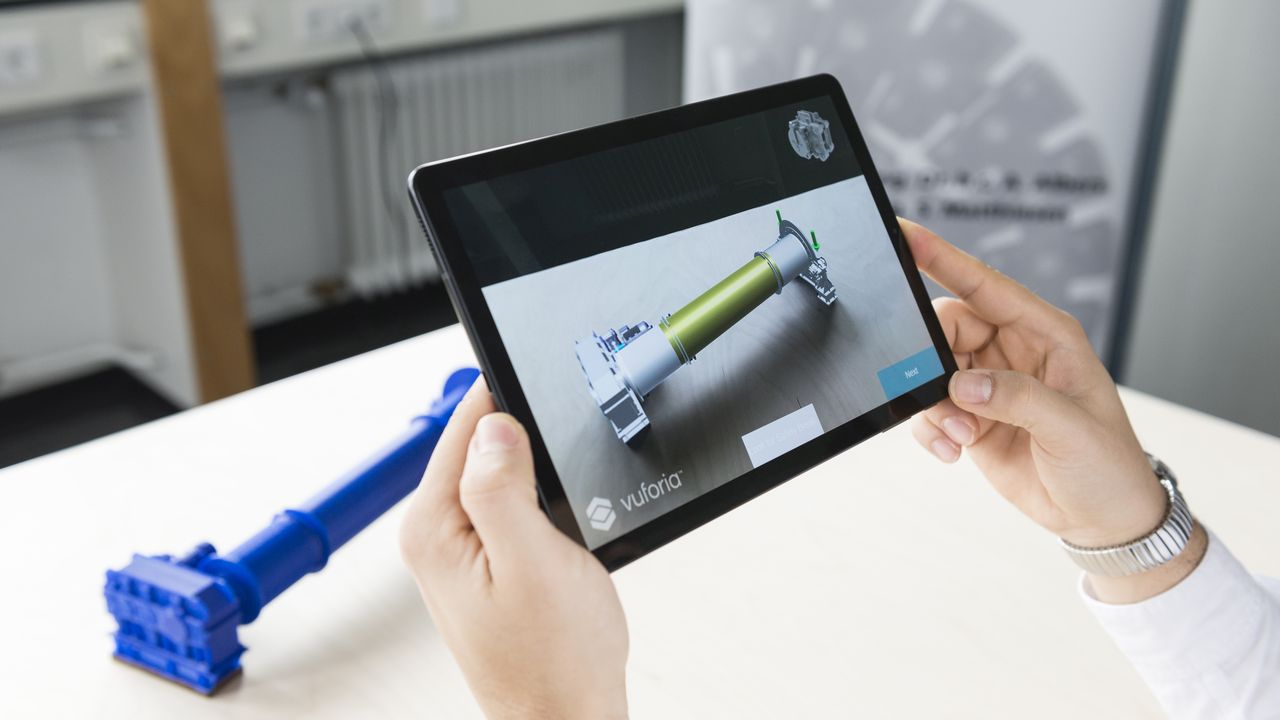 KIT researchers make physical-virtual models usable for engineers - new possibilities for contact-free, cross-location work
KIT researchers make physical-virtual models usable for engineers - new possibilities for contact-free, cross-location work
Can my product do what it is supposed to do - and will customers buy it? The answer to this question determines the success or failure of a market launch. The problem: we don't know it before the product launch. The solution: Instead of immediately building expensive prototypes of cars, appliances or machine components, companies can use virtual models in very early development phases to determine whether a new product is attractive to customers in terms of appearance and operation. Researchers at the Karlsruhe Institute of Technology (KIT) are developing new methods and processes for this purpose, which are applied practically in development and teaching.
"In the automotive industry, it is not uncommon for ten percent of the entire development budget to go into the production of prototypes," says Marc Etri, head of the XR Lab at the KIT Institute for Product Development (IPEK). "That can easily add up to many millions of euros." Scientists at IPEK want to reduce this expense: with Extended Reality (XR), i.e. computer technologies that extend the physical environment with virtual components (Augmented Reality, AR), or even replace it entirely (Virtual Reality, VR).
"XR technologies make it easier for us to adapt products to customer wishes and market requirements in all development phases - finding product profiles, creating concepts, specifying and realising them," Etri explains. "Physical-virtual prototypes can save development time and costs as well as prevent errors that are often only detected in later stages of development." As an example, he shows the photo-realistic three-dimensional model of a racing bike that can be edited on a tablet. "I can change the design of wheels, frame or saddle with a click." Even subtleties such as the colour and gloss level of the seat post or the structure of the seat cover change with a few clicks on the screen. Etri uses the example of a wristwatch to demonstrate the level of detail possible with the programme: even photo phenomena such as reflection on the glass of the case change across different design variants and adapted to the real room lighting.
"Many engineers in practice don't even know what is already possible with AR and VR," states Professor Albert Albers, head of IPEK. "The game developers have long since shown us how it's done," adds Etri, referring to the popular blockbuster titles from the gaming sector. Often, contemporary customer-oriented product development still fails due to inconsistent data management in the departments or partner companies involved and the resulting lack of consistency, says Albers. "We cannot use 20th century methods to develop 21st century solutions." He adds that engineering can benefit significantly from the new technologies and methods - including, of course, in the current pandemic situation: "Because they also make it possible to work across locations without contact," Albers continues.
The Extended Reality Lab in Teaching at KIT
That is why the XR-Lab is used not only in research projects in basic research and with companies, but also in teaching: "Last winter semester, we integrated virtual reality tasks into machine design teaching for the first time," says Etri. "Around 400 first-year students from the fields of mechanical engineering, bioengineering, chemical engineering and mechatronics were thus able to learn to assess the potential of XR technologies in product development early on in their studies." As digital natives, the students find it easy to handle these technologies, Etri believes. "This can have a massive impact on their choice of preferred engineering tools in their future careers."
The VR software Cross Connected from the Karlsruhe start-up R3DT, a spin-off from KIT, is used in the XR Lab.
www.kit.edu